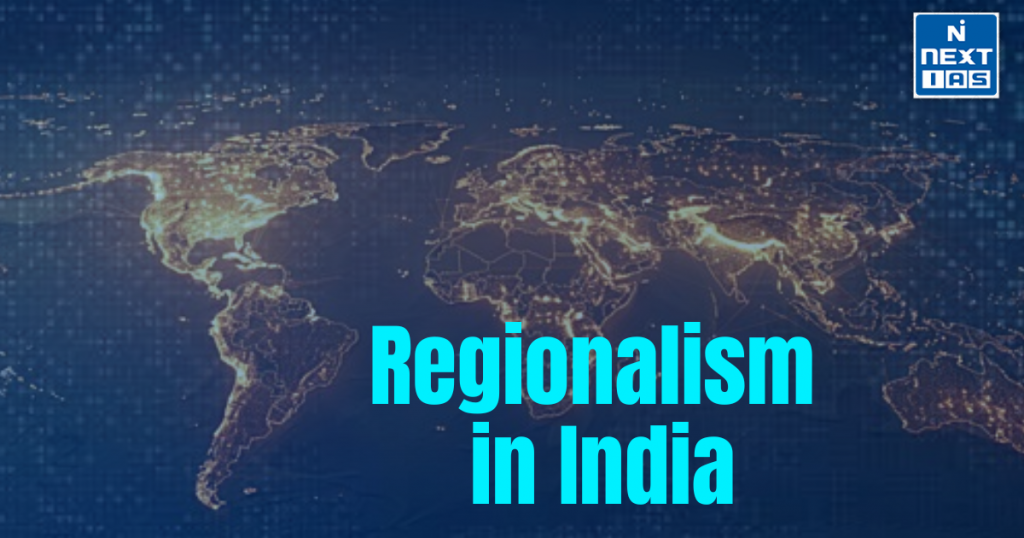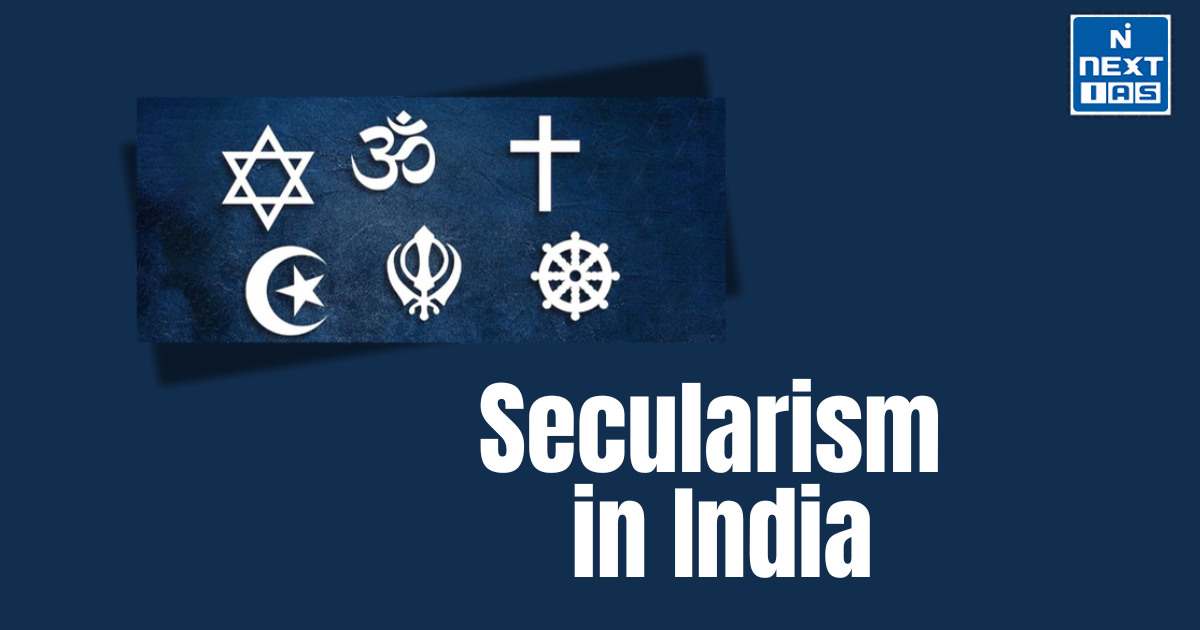
Regionalism in India refers to the political, social, and cultural movements that emphasize the distinctiveness of specific regions, often driven by concerns related to identity, economic development, and political autonomy. Its significance lies in the impact it has on national integration, governance, and the equitable distribution of resources. This article aims to study in detail the historical roots, forms, and key movements associated with regionalism in India.
About Regionalism in India
- Regionalism in India is a political and social phenomenon that manifests through the assertion of regional identities, concerns, and demands, often in opposition to or distinct from the national identity.
- It stems from the desire of certain regions to preserve their unique cultural, linguistic, and historical identities, sometimes leading to demands for greater political autonomy or even secession.
- While India is united as a nation, its diverse regional aspirations and the challenge of balancing regional and national interests have been a constant feature of the country’s political landscape.
Origin of Regionalism in India
- The roots of regionalism in India can be traced back to colonial times when the British deliberately fostered a sense of regional divisions in order to prevent unity among the Indian population.
- By creating provinces based on linguistic and cultural lines, the British played a role in intensifying regional consciousness.
- After India gained independence in 1947, regionalism became a significant challenge in nation-building.
- The Partition of India along religious lines further complicated the situation, as several regions felt marginalized or left behind in the newly formed political structure.
- The linguistic reorganization of states in the 1950s, under the States Reorganization Act of 1956, sought to address regional demands based on language, but it did not entirely resolve regional disparities or grievances.
Forms of Regionalism in India
- Cultural Regionalism: This form of regionalism arises from the desire to protect and promote the cultural, linguistic, and historical identity of a particular region.
- In India, where there are diverse languages, religions, and traditions, regions often demand recognition of their unique culture.
- For instance, the demand for a separate state of Telangana arose from the cultural distinctiveness of the region within the larger Andhra Pradesh state.
- Economic Regionalism: Economic regionalism is driven by the belief that certain regions are economically disadvantaged and need more resources or political power to promote their economic interests.
- This often leads to calls for a larger share of resources, infrastructure development, and greater autonomy in economic decision-making.
- For example, the demand for a separate state of Bihar or Uttar Pradesh often centers on issues of economic development and resource allocation.
- Political Regionalism: Political regionalism refers to the assertion of regional power in the political domain.
- Political leaders often exploit regional sentiments to build political constituencies that cater to specific groups, advocating for greater political autonomy or even secession.
- The rise of regional parties like the Shiv Sena in Maharashtra, the Akali Dal in Punjab, and the Dravida Munnetra Kazhagam (DMK) in Tamil Nadu can be understood in this context.
- These parties, while working within the democratic framework, promote regional political agendas and challenge national parties like the Indian National Congress (INC) and Bharatiya Janata Party (BJP).
- Secessionist Regionalism: In more extreme cases, regionalism takes the form of secessionist movements, where regions demand complete independence from the Indian state.
- These movements often have a complex history of cultural, religious, or political marginalization.
- Notable examples of secessionist regionalism include the Kashmir conflict and the insurgency in the northeastern states of India.
Key Factors Contributing to Regionalism
- Cultural and Linguistic Diversity: India is a country of vast cultural and linguistic diversity.
- The presence of numerous languages and distinct cultures has led to a strong sense of regional identity.
- Although the Indian Constitution recognizes 22 languages under the Eighth Schedule, there are many more languages and dialects spoken across the country.
- This diversity often leads to demands for regional autonomy in matters of language and culture.
- Economic Disparities: The uneven economic development across India has fostered regional discontent.
- While some states like Maharashtra, Gujarat, and Tamil Nadu have prospered economically, others such as Bihar, Uttar Pradesh, and Odisha have lagged behind.
- Economic disparities often translate into political demands for more resources and greater autonomy over economic decision-making.
- Political Mobilization: Regional political parties have played a significant role in intensifying regionalism.
- These parties often appeal to local grievances, cultural pride, and regional identity to galvanize support.
- The success of regional parties in Indian politics has resulted in a shift from a predominantly national-centric political system to one that incorporates significant regional power.
- Ethnic and Religious Identity: In some regions, religious and ethnic identity has become a focal point of regionalism.
- For example, in states like Punjab, where Sikh identity is strong, regionalism often intertwines with religious identity.
- Similarly, in the northeast, the indigenous tribal groups have struggled to preserve their cultural heritage against the backdrop of migration and demographic changes.
- Historical Factors: Historical events such as the colonial partition, the integration of princely states into the Indian Union, and post-independence migration have left deep scars and fostered regionalism.
- The creation of states like Jammu and Kashmir with special autonomy, the North-Eastern states with their own distinct problems, and the linguistic reorganization of states have all contributed to regional aspirations.
Prominent Regional Movements in India
- Telangana Movement: The Telangana movement, which led to the creation of the state of Telangana in 2014, was driven by economic and cultural grievances.
- The region felt that it was being politically and economically marginalized by the dominant coastal Andhra region in the combined state of Andhra Pradesh.
- The demand for a separate state grew out of dissatisfaction with the uneven distribution of resources and political power.
- Naxalite Movement: Originating in the Naxalbari region of West Bengal in the 1960s, the Naxalite movement is a radical form of regionalism that advocates for the overthrow of the government in favor of peasant-led revolution.
- While not strictly a regionalist movement, it represents the economic and social disparities between rural and urban India, especially in regions like Jharkhand, Chhattisgarh, and Odisha.
- Kashmir Conflict: The region of Jammu and Kashmir has been a flashpoint of regionalism and secessionism, due to its unique political status within India and the ongoing territorial dispute with Pakistan.
- Over the years, the region has witnessed various secessionist movements, many driven by a desire for either independence or merger with Pakistan.
- The Gorkhaland Movement: In West Bengal, the Gorkhaland movement demands the creation of a separate state for the Gorkhas of Darjeeling, citing cultural, linguistic, and economic differences with the rest of West Bengal.
- This movement highlights the regional demands for greater autonomy based on identity and local governance.
- Mizo National Front (MNF): In the northeastern state of Mizoram, the Mizo National Front led an insurgency against the Indian government in the 1960s, demanding a separate Mizoram state.
- After the state was granted, the movement shifted from secession to a demand for greater autonomy and the protection of indigenous culture and resources.
Consequences of Regionalism
- Positive Aspects:
- Cultural Preservation: Regionalism helps protect and promote the cultural identities of various ethnic and linguistic groups.
- Decentralization: It encourages decentralization of power, allowing for more localized decision-making and better governance in specific regions.
- Developmental Focus: Regional movements often bring attention to underdeveloped areas, leading to increased government investment and infrastructure development in neglected regions.
- Negative Aspects:
- Fragmentation of National Unity: Extreme regionalism can lead to the fragmentation of the nation, weakening the sense of national identity and unity.
- Ethnic and Religious Tensions: It can fuel ethnic and religious tensions, leading to violence and conflict between different groups.
- Political Instability: Regional movements sometimes create political instability, as demands for autonomy or secession challenge the sovereignty and integrity of the nation.
Conclusion
Regionalism in India is a multifaceted issue that continues to shape the political and social landscape. While it reflects the country’s immense diversity and the legitimate aspirations of various groups, it also poses challenges to national integration and stability. Addressing regional concerns through dialogue, equitable development, and decentralization of power remains crucial for maintaining India’s unity in diversity. By fostering inclusive policies and respecting the unique identities of different regions, India can achieve a harmonious balance between regional aspirations and national unity.
GS - 2





